
Since April 1, 2020, following the conclusion of reform, China’s surface meteorological observation has been fully automated.
The surface meteorological observation automation reform has gone through two phases: pilot operation and national trial operation.The final evaluation shows that the trial operation has achieved expected results. Among them, the frequency of automated observations increased by about 4 to 8 times compared with manual observations. The time for transmitting observation data was optimized from minutes to seconds level. The data is transmitted directly to the provincial level. As a result, workload is reduced by about 30%.
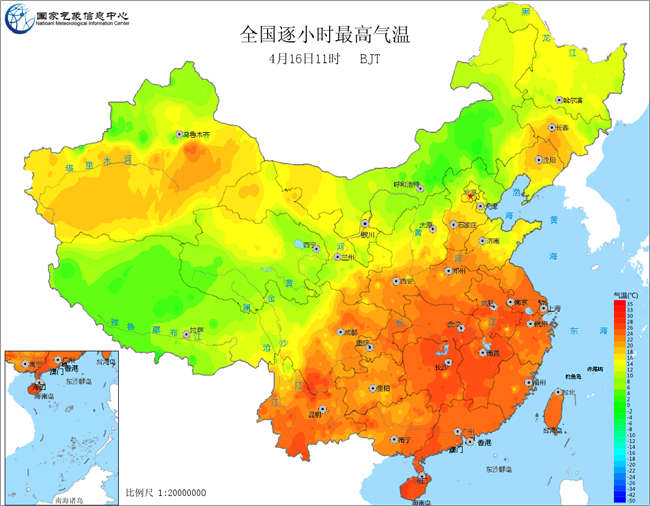
Hourly maximum temperature
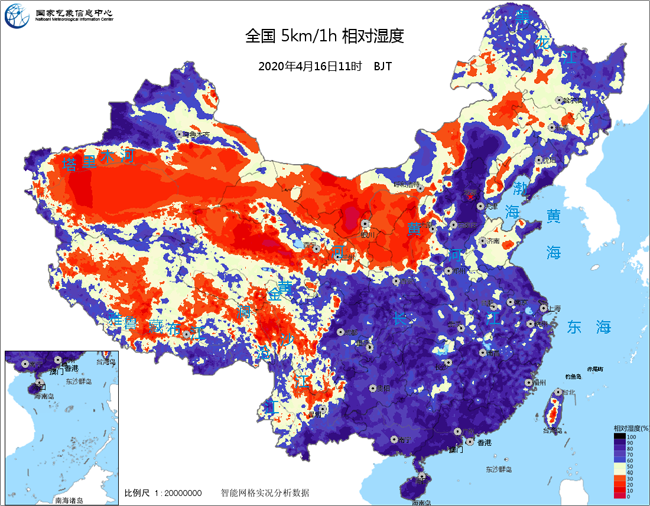
Relative humidity

Five kilomter/one hour precipitation
The data is now integrated into national and provincial environment in a real-time manner, of which is connected to the MICAPS platform, supporting daily operation nationwide and promoting the development and application of new technologies. Surface observation automation is expected to play an active role in stimulating the transmission from automatic to intelligent observation in the future.
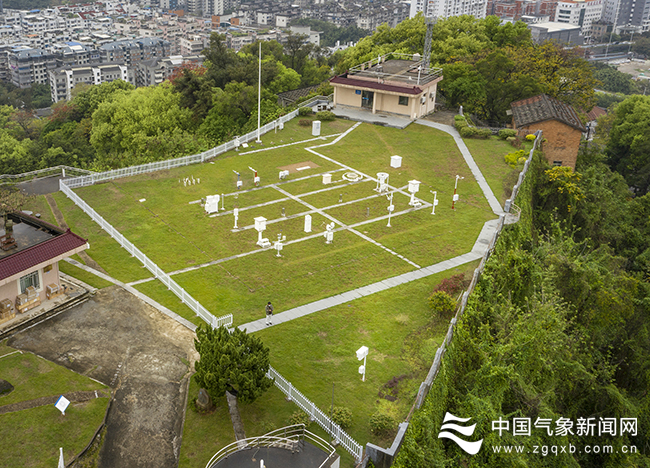
Paranoma of Fuzhou national fundamental climate observatory
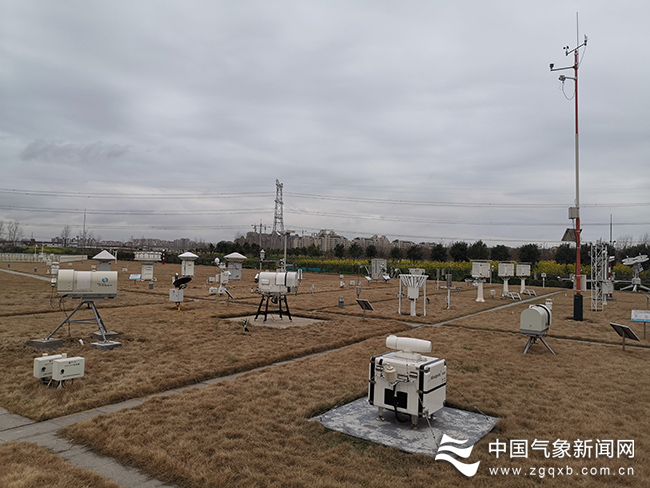
Shanghai Baoshan Meteorological Observatory on March 31,2020
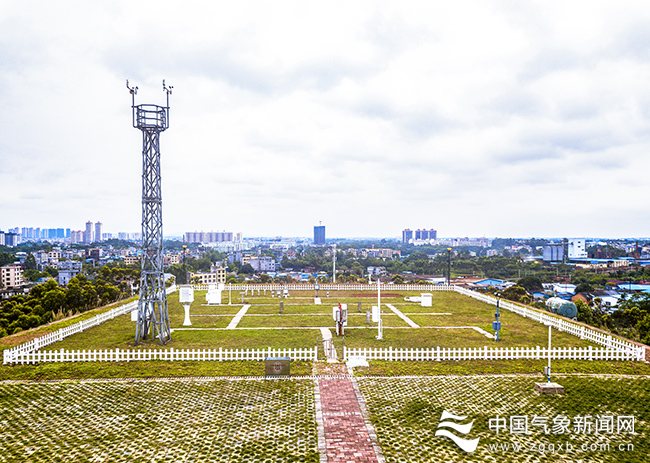
Qinzhou national fundamental ground meteorological observatory of Guangxi on March 31,2020
Noticeable Features:
New Equipment
1. Automatic Observation System for Acid Rain
The system, made up of automatic precipitation sampler, automatic precipitation sample analyzer and comprehensive data processing software, is mainly responsible for observing precipitation pH, conductivity, precipitation sample temperature, precipitation, etc.
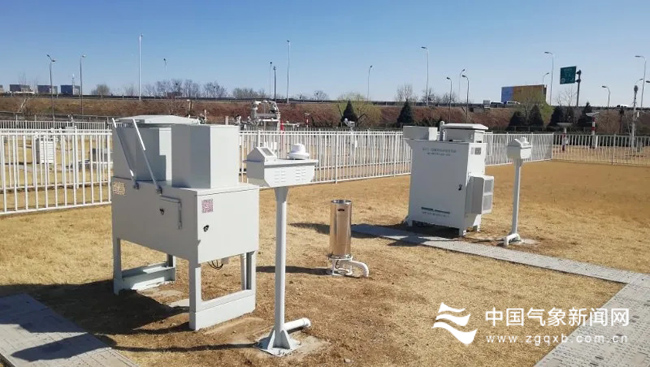
It can automatically collect precipitation samples, record the starting and ending time of precipitation process and temperature of precipitation samples, and automatically complete the determination of pH and conductivity of precipitation samples, and record, store and upload relevant data information.
In terms of mode of operation, the system automatically takes a precipitation sample every 24 hours, opens the precipitation sampling bucket within a specified delay time when the precipitation is detected by rain sensor detectors, and closes the precipitation sampling bucket when it detects that precipitation has stopped for a specified time.
2. Frozen Soil Automatic Observer
It has high observation accuracy, stable performance, easy maintenance and other features. The observation contents include soil freezing levels and depths. Based on the freeze-thaw characteristics of moisture-containing soils, it can measure the soil freezing depths by measuring the phase state of water and using a threshold judgment method.

There are two modes of data transmission including active and passive transmission. When the passive transfer mode is started, the data acquisition processing is completed every minute, and the data closest to the current time is sent to the upper computer. When the active transfer mode is started, the data transmission is performed with the upper computer according to the preset procedure.
3. Radiation Observation System
The system includes the reference, primary, secondary and tertiary radiation stations. The reference radiation station uses analogue radiation sensors, connecting to the reference radiation sub-collector to collect reference radiation data. The primary, secondary and tertiary radiation stations are all equipped with digital radiation sensors, which directly output data and information on total radiation, reflected radiation, scattered radiation, direct radiation, atmospheric long-wave radiation and surface long-wave radiation after data processing.

After completing the data acquisition, the radiation station will use the radiation sub-collector to collect, calculate and store the data of each radiation sensors and supporting accessories, to form and upload a complete package of data that meets the data dictionary requirements.
4. Intelligent Video Observer of Weather Phenomenon
The Observer, consisting of video collector, data processing unit, communication unit, power supply unit and accessories, can automatically identify the cloud cover, cloud form, ground condensation(frost, dew, silver thaw, rime), ice, snow and other weather phenomena or meteorological elements.
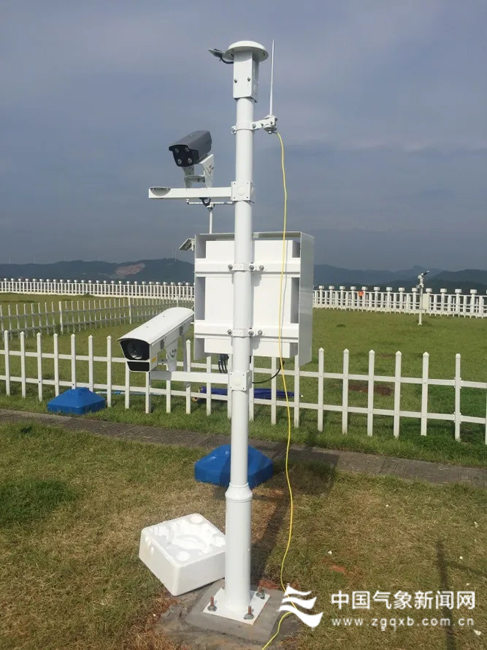
Videos and pictures can be automatically collected through the video collector. The picture sampling frequency is 1 time per minute, the video sampling frequency is 6 times per hour. The data processing unit can automatically check the pictures and perceive the qualified pictures through the intelligent recognition algorithm, so as to realize the automatic observation and recognition of weather phenomena or meteorological elements.
5. Air Temperature Multi-Sensor Standard System
The system has three air temperature sensors, air temperature multi-sensor standard controller, etc. It solves the problem of abnormal or missing temperature data caused by the failure of the current automatic weather station temperature sensor, ensuring the integrity and availability of air temperature data.
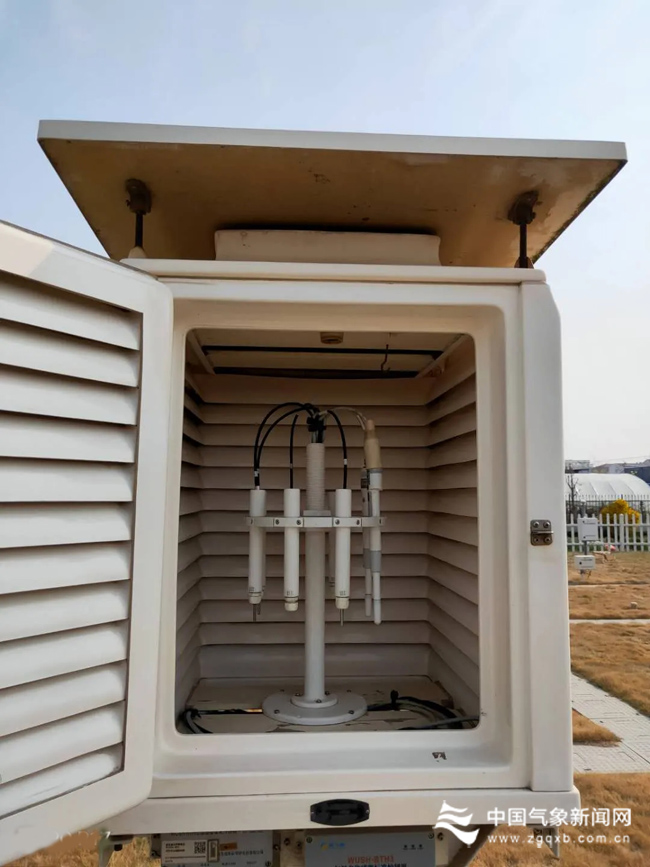
The observation data, collected by system's three air temperature sensors, enter the air temperature multi-sensor standard controller to be processed into standard values through fusion and monitoring algorithms. During the data processing phase, a single air temperature sensor collects minute air temperature observation data. Thereafter the data will be processed into air temperature standard values by the air temperature multi-sensor standard controller.
6. Precipitation Multi-Sensor Standard System
The system includes three tipping bucket rain sensors, precipitation multi-sensor standard controller, etc. It solves the problem of rain data anomaly or lack of measurement due to the failure of the rain sensors of current automatic weather stations, improves the level of automation and reduces manual maintenance workload.
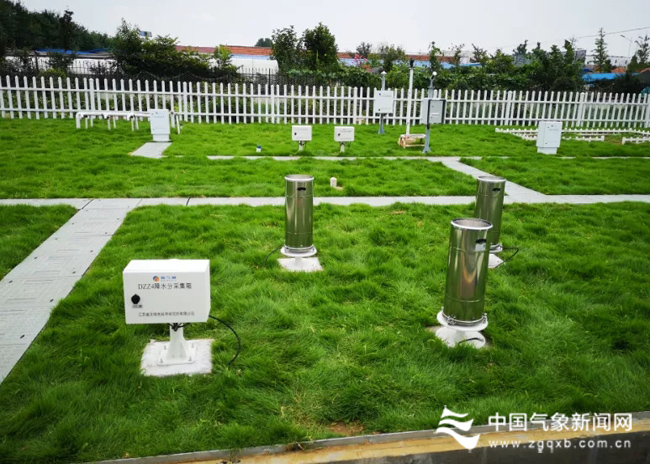
During the phase of data acquisition stage, the sampling frequency reaches 1 time per minute, and the precipitation observation data collected by each of the three tipping bucket rain sensors are automatically processed to the tipping bucket rain standard value. Then, the system connects three tipping bucket rain sensors to the precipitation multi-sensor standard controller, to realize the data communication through the main collector of automatic weather stations.
A few key technologies
Cloud observations encompass projects like observations of cloud shape, cloud cover, and cloud height, which cover 3 species, 10 categories and 9 kinds. In the midst of the automatic reform in 2014, cloud shape observation project was canceled. From April 1, 2020, automatic reform of ground meteorological observations has shifted from national trial operation to official operation, which aims to further realize automatic observations of cloud cover and height.
Visibility observations include daylight observations and nighttime observations. Compared with manual observations, visibility automatic observations are continuous and real-time based. Observations has good comparability and stability, with rising accuracy and temporal resolutions, which plays an instrumental role in elevating refined level of visibility prediction. For instance, in terms of short-duration air mass fog, manual observations may not capture the changing conditions of visibility while automatic observational instruments can do it.
Weather phenomena are composed of factors like precipitation, ground condensation, and lightning. These phenomena crop up under certain weather conditions. Currently, there are altogether observations of 21 kinds of weather phenomena.
Provincial meteorological departments push ahead automatic observations
Heilongjiang: In 2019, meteorological departments in Heilongjiang carried out phased horizontal observations of sunlight and precipitation by harnessing weather phenomena meter and conducted single track operation of the trial stations in July, 2019. They have designated staff to take charge of trial operation work, set up technical team, and carried out technical training of operation personnel of all stations. During the trial running, new facilities and technologies are becoming more mature, and the overall recognition consistency rate of meteorological factors like rime, dust or blowing sand. Right now, the prediction system can produce hourly prediction within 24 hours at daily and hourly interval, realize the incorporation of the latest conditions information and mesoscale model products, upgrade prediction performance, and make much richer and more refined prediction service products.
Hunan: Hunan meteorological departments have promoted multi-source observation data integrated operation, and forecasters at all levels can derive data like hourly cloud cover via MICAPS system; reduced large quantities of intensive manual observations tasks, with workload of national fundamental stations/ baseline observatories down by 33%; combined statistics approach with artificial intelligence technology, enabling the leapfrog development of integrated meteorological observations smart analysis and recognition system from technological perspective. At the end of 2019, accuracy rate of the comprehensive recognition products increased from 5% to 10%. They completed multi-source integrated AI identification algorithm model construction; developed weather phenomena video smart observations meter; completed the layout of 0ver 80 sets of weather phenomena automatic observations meter, and realized the automatic generation and upload of observation data.
Time is the best prove
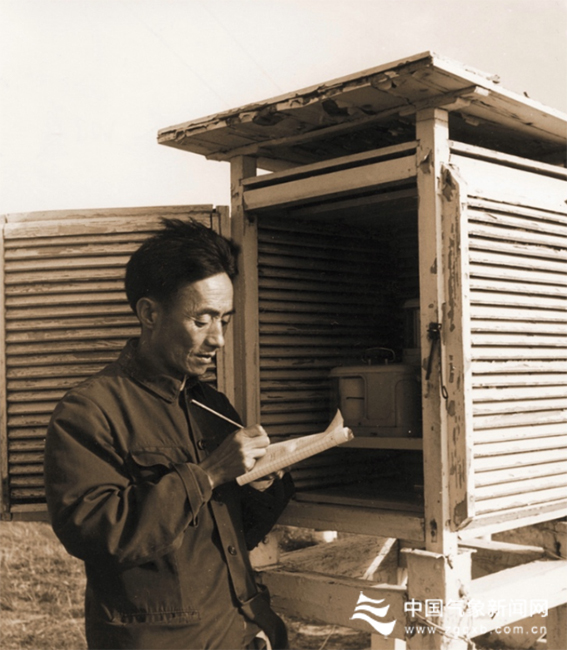
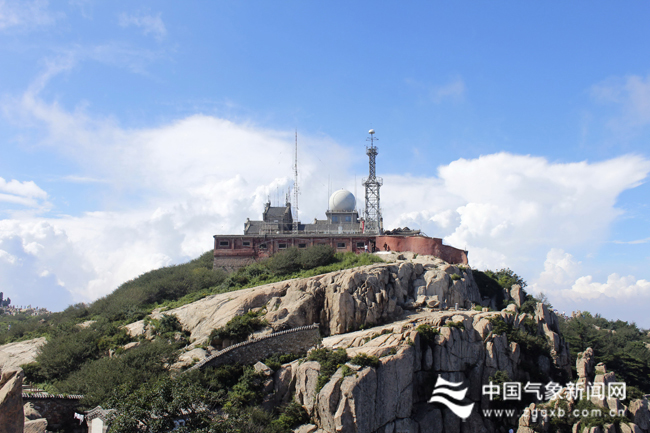
During the 1970s and 1980s, highway cannot reach the Taishan weather station. Working facilities and articles of daily use were all carried onto the station by the staff themselves. After they climbed to the mountain, they would face isolated lives of over 20 days. When on duty, observation staff could not sleep a wink, and needed to draw 7 diagrams, 24 aviation weather forecasts, and intermittent hazard forecast, or others, and each one of those forecasts should be disseminated without any delay. At present, Taishan weather station has automatic observation equipment, and the observation elements are provided by the automatic weather station. Observations from the original once every hour become to now once every 5 minutes and are more accurate.The picture above shows the then-director of the station was recording the temperature and humidity data in the thermometer screen. The picture below shows the current Taishan weather station with automatic observation equipment.

During the 1990s, all kinds of meteorological factors and each figure should be transcribed by hand. Each report was the painstaking effort made by pen-men, proofreaders, and pre-viewers. The picture is observer was reading the ground surface data.
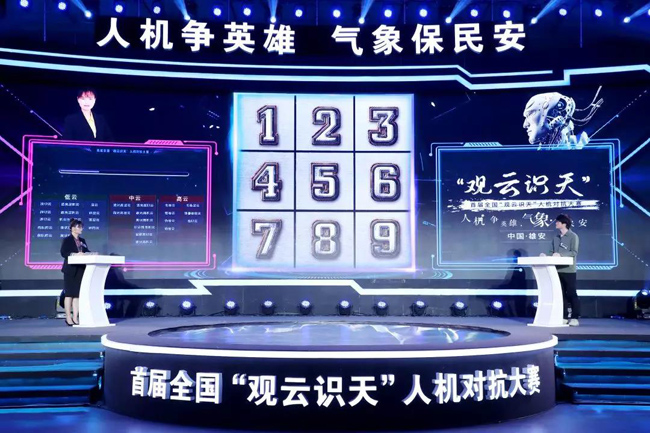
Right now, smart meteorological demonstration, meteorological scientific innovation guidance, and meteorological service data incorporated into the digital city construction of the New Area are in the pipeline in Xiong’an New Area, and technologies like cloud computing, big data, Internet of Things, Artificial Intelligence are flexing their muscles. The picture is the first national man versus computer competition of Understanding Clouds.
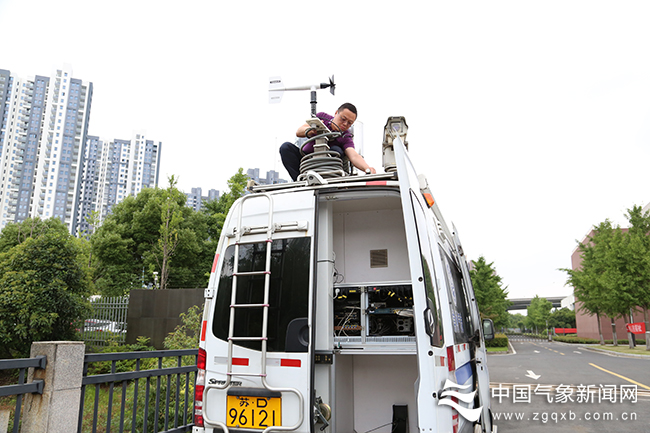
In 2019, staff from Changzhou meteorological center of Jiangsu was installing field automatic observations facilities.
Editor Hao Jing and Liu Shuqiao